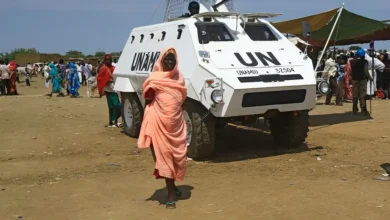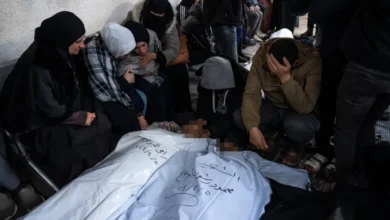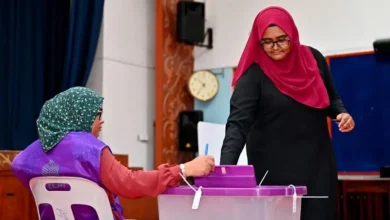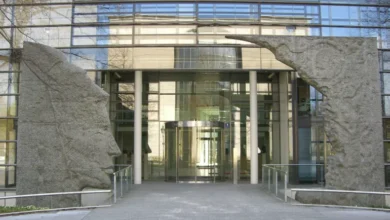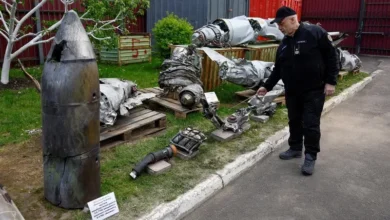Afghan cartoonist, now a refugee, sheds light on plight of women
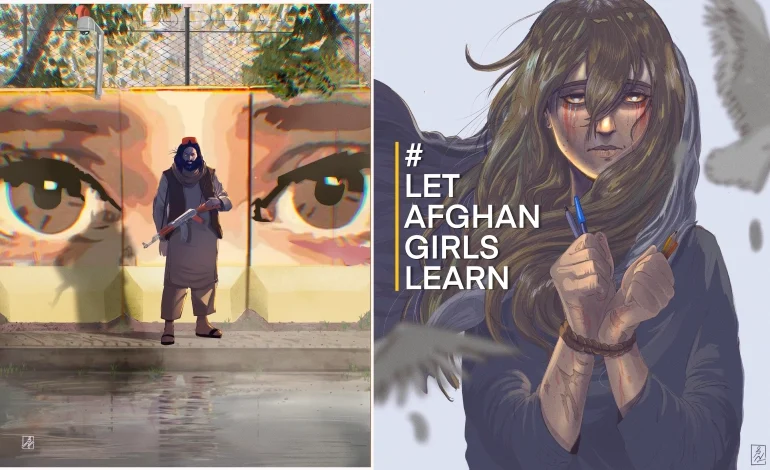
When the Taliban returned to power in August 2021, thousands of Afghans fled the country fearing curbs on freedoms. Cartoonist Sayed Muhammad Hussainy was one of them.
The 29-year-old artist, who has taken refuge in Germany, said he feared the Taliban would target him for working with the previous West-backed government of President Ashraf Ghani.
Prior to the Taliban takeover, Sayed’s art channelled Disney-eque qualities, with imaginative characters beaming with infectious smiles and wide-eyed gazes. He would depict women with hope and a confident sense of purpose, often draped in the red, green and black colours of the Afghan flag adopted under the previous West-backed government. The Taliban has adopted a new flag.
Now Sayed’s striking and unapologetic art has become mired with muted faces looking blankly back at the viewer as the chaos swirls around them, portrayed by strong downpours of rain or menacing men engulfing all of the space.
“You can see the difference between my art before and after the Taliban took over,” said Sayed. “It’s like night and day.”
In one of the sketches shared last April on his Instagram with a following of more than 18,000, several men encircle a woman. With weapons in their hands, they forcefully place a veil over her. Their muted tones are in sharp contrast to the woman’s bright colours and hue. She is sad, but her grip on her books is strong and unwavering.
Sayed, who drew the picture from an undisclosed location in Afghanistan knowing full well his life was at risk for his actions, knows his blunt images might make viewers uncomfortable. But he says it is his duty to help strengthen the voices of those standing up for women’s rights and educational freedom in Afghanistan.The art also mirrors Sayed’s internal struggles coming to grasp with the reality of what people in Afghanistan are going through today, which includes growing levels of poverty and food insecurity.
“I feel the pain and hurt of my country and I try to show those emotions in my art,” he said.
Despite the overwhelming feeling of hopelessness in Sayed’s drawing, he said the women in Afghanistan are heroines that have the power of resilience and perseverance.
“I want to amplify the voices of Afghan women, I want to show the truth of what is happening to women in my country”, said Sayed.
Travelling across Afghanistan to pursue a passion
Sayed discovered art at a young age as an outlet to silence the distraught noise around him of everyday violence and the discovery that friends and family were affected. More than 240,000 people were killed during the 20 years of US-led war and occupation. The Taliban, which led an armed rebellion, was also blamed for targeting civilians.
“It’s hard to be a kid in Afghanistan”, said Sayed. “You don’t have the same rights and freedoms as other kids from around the world.”
What started as a hobby soon became a passion that would take up most of his days. He left his home province of Sar-e Pul in northern Afghanistan to explore a digital art course in neighbouring Balkh province in 2014.
However, his hunger went beyond the course, often looking at drawings of famous comic book artists like Clay Mann to study dynamic poses. YouTube tutorials from digital artists like Ross Tran and Sam Yang also helped Sayed hone his craft when it came to colouring techniques.
After completing the course, Sayed travelled to the capital Kabul, where his art garnered the attention of government ministries.
The night Kabul fell
Sayed’s first digital poster was commissioned by the Press Directorate of the Presidential Palace in 2019 as part of a campaign to denounce violence against women in Afghanistan.
As Sayed had more work commissioned, showing Afghan women in confident positions of power, the Taliban were making their way towards Kabul.
Sayed remembered the night the Taliban took over the Presidential Palace vividly, as he was working in the vicinity.

